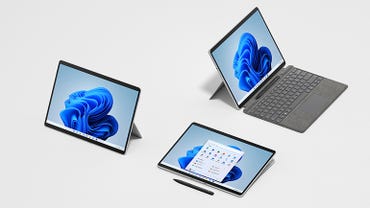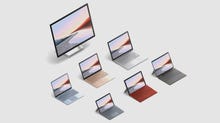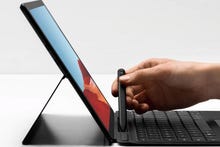During the last few years here on ZDNet, I’ve written about how I spend a lot of time working on my iPad Pro. It’s my ideal work machine for writing, triaging my inbox, and bouncing between Slack or Discord.
But even though the iPad has been a staple in my workflow over the last 10 years, I’m starting to grow tired of using overpowered hardware with software that’s yet to live up to its potential. I’m hoping next month’s iPadOS 16 announcement will add, at a minimum, real external monitor support and better accessory support.
For the last few months I’ve been trying out different devices, mainly Windows laptops, in a bid to find something to replace my iPad Pro. The Surface Laptop Studio is fast, powerful, and a joy to use, but it lacks LTE and is bulky compared to the iPad Pro. I’ve used a Surface Pro X off and on since its release, and the form factor is ideal, but the lack of full support for Microsoft’s slow transition to ARM by third-party apps results in slow performance.
Like
- Portability
- LTE connectivity
- Battery life
- Price
Don’t Like
- Random performance hiccups
- It’s heavy as a dedicated tablet
As part of my journey, I’ve been testing a Surface Pro 8 with LTE. Even though you won’t find it listed on Microsoft’s main Surface store, the company does indeed make an LTE version of the Surface Pro 8. In order to find it, however, you’ll need to look at the business version of the Microsoft Store. In fact, it’s even called the Surface Pro 8 for Business. You can order the Business model from one of the retailers Microsoft lists on this page, including Verizon Wireless, or directly from Microsoft Business.
A new-look Surface… kind of
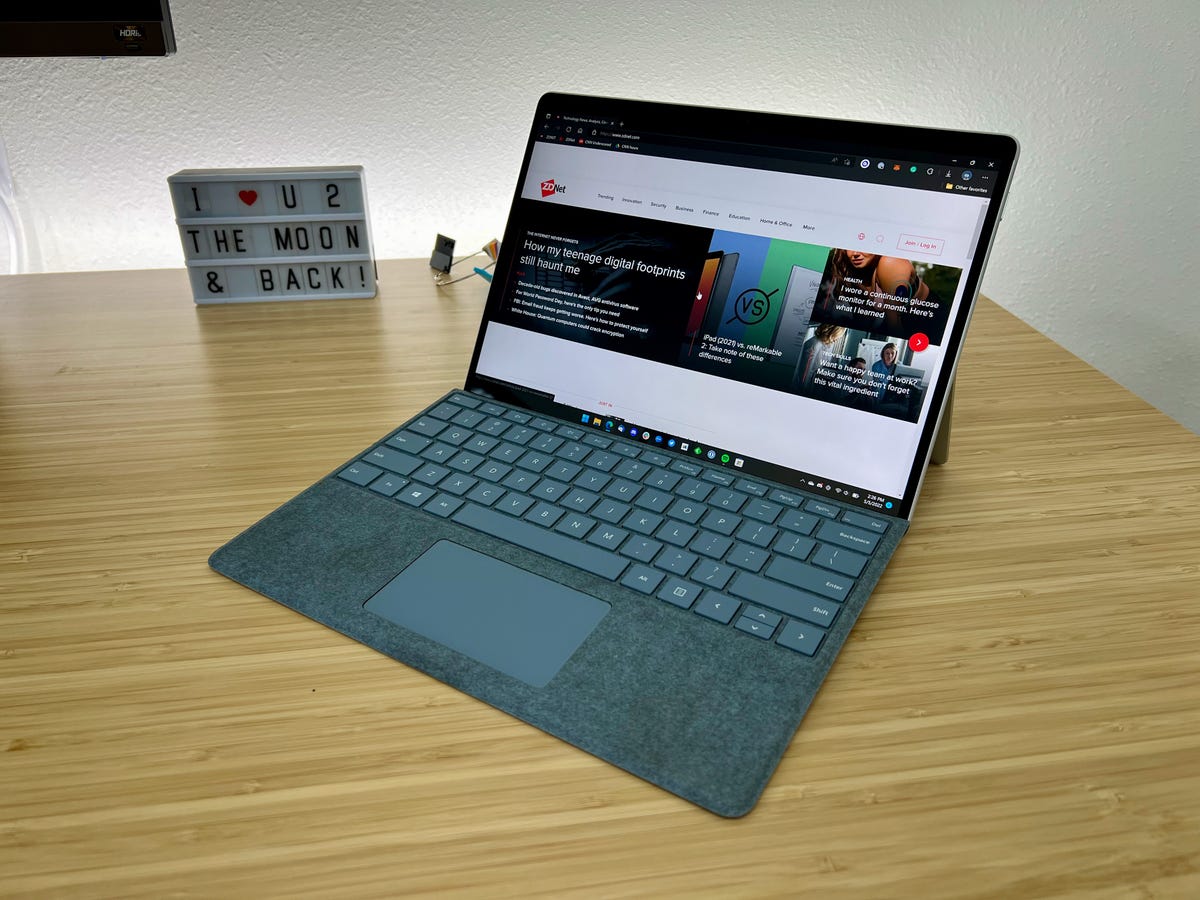
When Microsoft announced the Surface Pro 8 in Sept. 2021, it revealed a completely new design for the Surface Pro lineup. Well, it wasn’t completely new; it’s actually the same overall design of the Surface Pro X. Placing the Pro X next to the Pro 8, the only noticeable difference that I can see right away is that the Pro 8 is thicker than the Pro X. Otherwise, they look identical.
The Pro 8’s PixelSense display has up to a 120Hz refresh rate, responds to touch, and can be used with a Surface Pen.
The built-in kickstand has the traditional Surface-like ability to alter the viewing angle of the Pro 8’s display, including laying it nearly flat on a table — a position that’s ideal for drawing or writing with the Slim Pen 2.
On the right side of the Pro 8’s housing are a Surface Connect port and two Thunderbolt 4 ports for connecting external displays, hard drives, or using any USB-C accessory. Just above the only two ports on the Pro 8 is the power button. The left side of the housing has a 3.5mm headphone jack and the volume up/down buttons.
Above the display, you’ll find a 5-megapixel camera along with all of the hardware necessary for facial recognition to use Windows Hello for unlocking the Pro 8 or signing into apps.
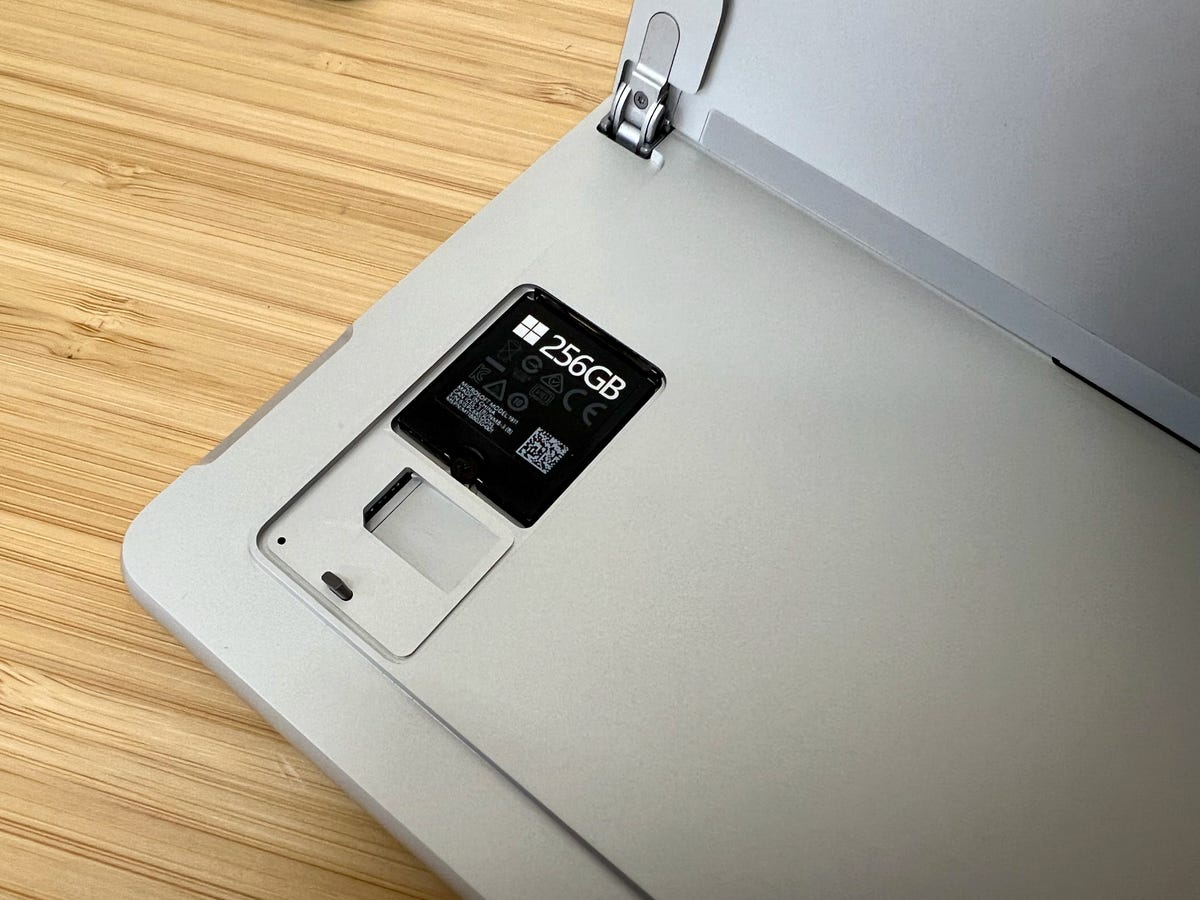
When you open the kickstand, you’ll find a small door in the bottom left corner of the Pro 8’s housing. You’ll need to use a SIM card tool or a paper clip to press into the small hole to eject the cover. Underneath it is the Pro 8’s SSD storage — which you can swap out and replace yourself — along with the SIM card slot.
You don’t have to use a physical SIM card thanks to the Pro 8’s support for an eSIM, but since I often switch between the Pro X and iPad Pro, I already had a dedicated SIM card with a data-only plan tied to it.
Included in the box is the Pro 8 and a charger that uses the Surface Connect port. If you don’t feel like carrying the included charger, you can use either USB-C/Thunderbolt 4 port to charge the tablet.
What you won’t find in the box is any sort of stylus or a keyboard. Instead, you’ll need to buy them separately. If you’re a longtime Surface user, I have some bad news: the previous Surface keyboards won’t work on the Pro 8.
You have three different options to outfit your new tablet with a keyboard, converting it to a 2-in-1. You can pick up the $179 Surface Pro Signature Keyboard, the $199 Surface Pro Signature Keyboard with Fingerprint Reader (currently on sale for $169), or get the $279 combo kit of a Surface Pro Signature Keyboard with Slim Pen 2.
I already had the combo kit, so that’s what I’ve been using during my testing.
Regardless of which keyboard you pick up, all of them have a slot for a Surface Slim Pen 2 above the keyboard. When it’s folded up, the pen rests against the Pro 8’s bottom bezel. It wirelessly charges the pen, so it’s constantly ready for use.
Overall, I love the design of the Pro 8. I’ve actually found myself using it as a tablet more than I do the iPad Pro simply because the kickstand is built into the housing. There isn’t another cover or case I have to manage. It’s fantastic.
But can it replace an iPad Pro?
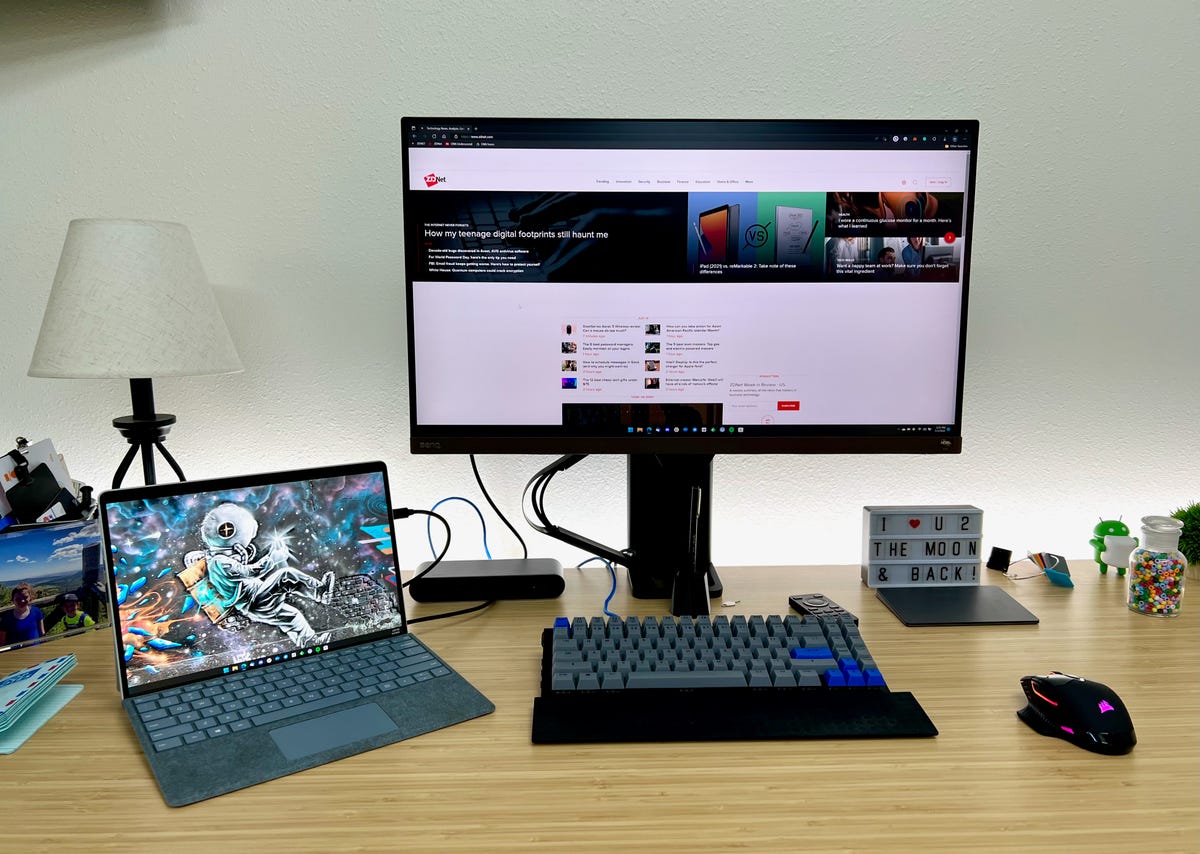
Inside the Surface Pro 8 I’ve been testing is an 11th Generation Intel Core i7 processor, 16GB of memory, and a 256GB SSD. It was running Windows 11 Pro out of the box.
The LTE options range in price from $1,349 for an Intel Core i5, 8GB of memory, and 128GB of storage up to the build I tested, which normally retails for $1,849 but is currently on sale for $1,599. Again, those prices don’t include a keyboard.
The rest of the specs include Wi-Fi 6 support, Bluetooth 5.1, and up to 14 hours of battery life, down from 16 hours for the Wi-Fi only model.
One of the first things I did after setting up the Pro 8 was to enable the 120Hz refresh rate, bumping it up from the standard 60Hz. I’ve been able to notice a difference while scrolling or doing some casual gaming, but overall, I’m not sure it’s entirely needed on the Pro 8. Yes, it helps, but it also comes at a cost of battery life.
I’ve yet to get anywhere near the 14-hour estimate, even when only using the Pro 8 on Wi-Fi. However, the Pro 8’s battery has lasted as long as my iPad Pro’s battery, which is typically an 8-hour workday, give or take an hour.
One thing that surprised me after using the Pro X and iPad Pro and switching to the Pro 8 is the fact the Pro 8 still has a fan in it. I’m guessing the Pro 8 is so much thicker than the Pro X in order to make room for a cooling system. The fan isn’t terribly loud, but it does run a lot, especially when I have the Pro 8 connected to an external monitor.
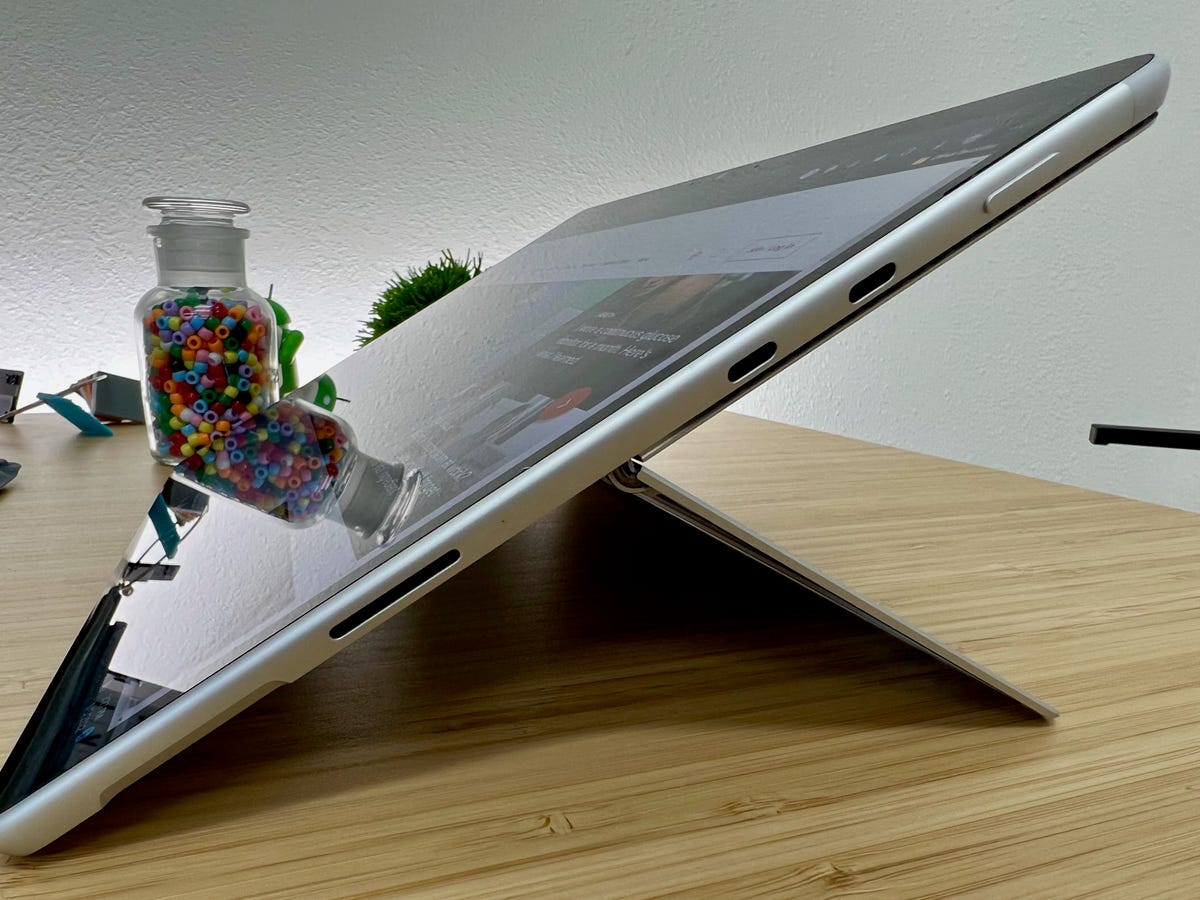
Speaking of which, I had the Pro 8 connected to a monitor for the majority of my testing. Thanks to the addition of Thunderbolt 4 support, I was able to use any of the Thunderbolt 4 ports I have on hand — including Belkin’s Pro Thunderbolt 4 Dock, which has enough ports for my use.
The ability to connect a tablet to an external display and have it actually work how it’s supposed to is a huge boost for my productivity. I was able to have apps like Slack and iCloud email open on the Pro 8’s screen, while writing in iA Writer on the larger external monitor with multiple Edge tabs open.
When working on my iPad Pro connected to a monitor, whatever’s on the iPad’s screen is mirrored on the larger display. There are some apps that use Apple’s rudimentary API for external displays, but it’s not great.
Also, I have a lot of workarounds for completing certain tasks on the iPad. For instance, in order to publish content on ZDNet, I often have to remotely access my MacBook Pro and use Chrome in order to add images to a story, otherwise the content management system errors out. To be fair, that’s a Safari issue that also exists on the Mac. However, I can use the true version of Chrome on a Mac and not a skinned version of the WebKit rendering engine that Apple forces developers to use on the iPhone and iPad. That means Edge, Chrome, Brave, and the like are essentially all just skinned versions of Safari.
I realize that the Pro 8 is running a full-fledged operating system in Windows 11, whereas the iPad Pro is running a mobile-first operating system in iPadOS, but the devices are relatively the same size and target the same type of user. Even the prices are close enough that the comparison is warranted.
The total cost of the Surface Pro 8 with LTE, along with the Signature Keyboard Cover with Slim Pen is $2,128. The iPad Pro with 5G, 16GB of memory, 1TB of storage, Appel’s Magic Keyboard with trackpad and an Apple Pencil is $2,449.
There are still many things the iPad Pro does better
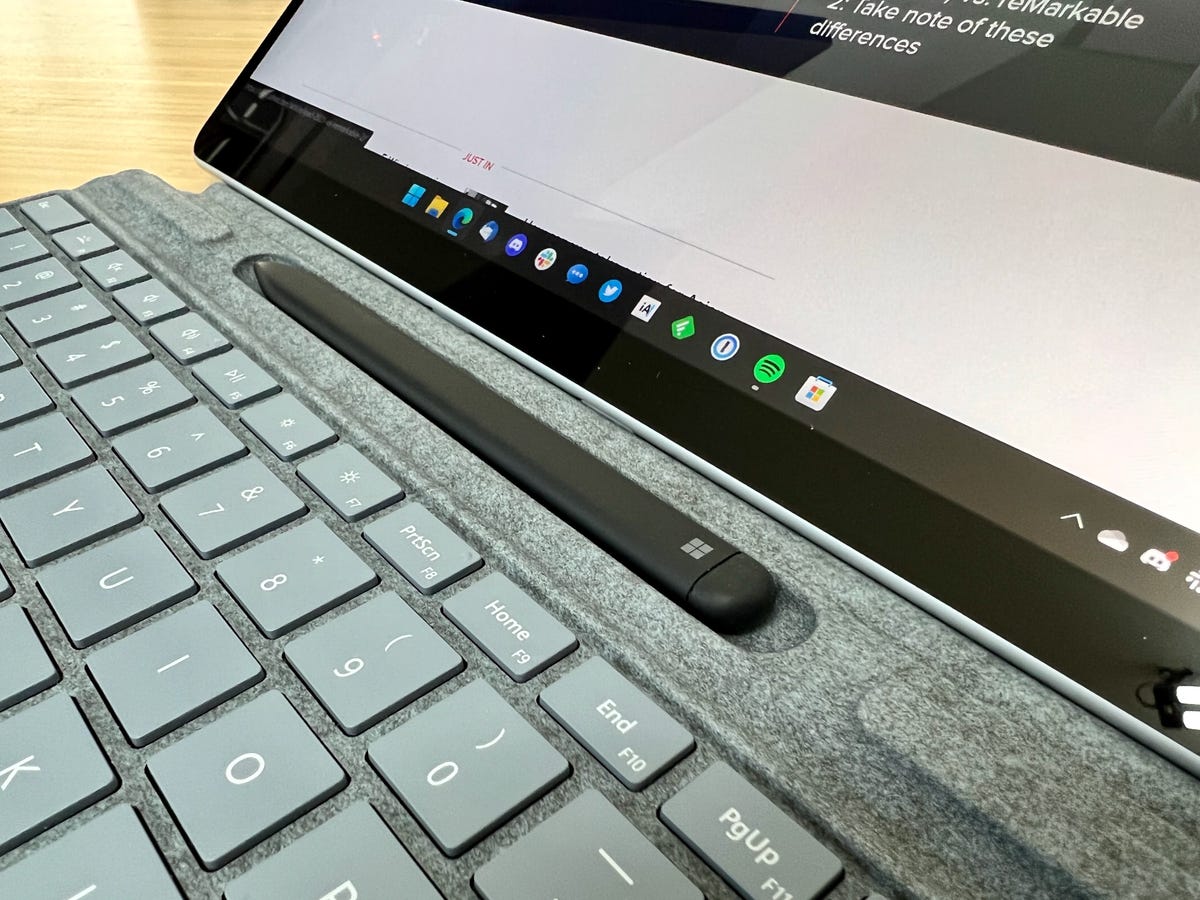
I admit, up until this point I’ve been writing what amounts to a love letter to the Surface Pro 8. But that’s because it truly deserves it. It’s a fantastic 2-in-1 device that I have thoroughly enjoyed using, but there are some areas where the iPad Pro is just a better device for me.
I prefer to use Apple’s Mail app along with my iCloud+ personal domain as opposed to either Thunderbird or the iCloud website for accessing my email. I also love writing on the iPad because there are far fewer distractions with a single app open and visible. I need to experiment more with using Windows apps in full screen and Focus assist to recreate a similar experience on Windows. It’s also a better tablet thanks to an interface that’s designed for touch-first.
Another thing I love about my iPad Pro is that its performance is reliable and consistent. When using the Pro 8 with multiple apps open, there would be a slight delay or pause before an app would appear after being minimized at times. It wasn’t specific to any one app; I frequently experienced it with Thunderbird, Discord, and Slack.
Bottom line
After a few weeks of my iPad Pro sitting on a shelf, I have gone back to using it as my main device. But I’m already missing some of the features and things I could do on the Surface Pro 8 that I can’t on the iPad Pro — like hook up a webcam to live stream an event over LTE (something I actually did recently for family members that couldn’t attend a funeral).
So, iPad or Surface Pro 8? For me, it’ll come down to what iPadOS 16 does or doesn’t add to the iPad. But for everyone else, if you’re on the fence about whether to go with the Surface Pro 8 or an iPad Pro, I’ll say this: you can’t go wrong with either device. They’re both fantastic in their own right.
At the end of the day, however, you’re getting a full computer in the Surface Pro 8 and, currently, 80% of one in the iPad Pro.


